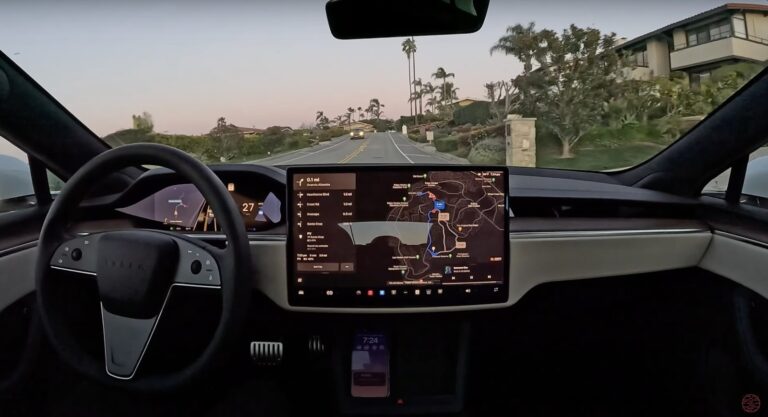It is not a weird thing to say that the technology ‘war’ era has come. Many companies compete to create more innovative products in their industry. However, there is one strongest company in the self-driving industry, ‘Tesla.’
Tesla was founded in 2003 by Martin Eberhard and Marc Tarpenning, with Elon Musk joining as an early investor and later becoming CEO. The company’s goal is to accelerate the world’s transition to sustainable energy through electric vehicles and clean energy products. Tesla’s first car, the Roadster (2008), showed that EVs could be high-performance. This car later became a milestone in breaking the stereotype that electric cars were slow, small, and expensive. It was followed by the Model S (2012), Model X (2015), Model 3 (2017), and Model Y (2020), which helped bring electric cars into the mainstream. Beyond cars, Tesla produces energy storage solutions, solar panels, and the Solar Roof, and it operates a worldwide Supercharger network. Tesla has been a key driver in making electric vehicles and renewable energy more popular globally.
Tesla’s FSD, shortened for Full Self Driving, is a cutting-edge technology designed to allow vehicles to navigate roads with minimal or even no driver intervention. Built on Tesla’s advanced Autopilot platform, FSD only relies on cameras, ultrasonic sensors, and a powerful onboard computer to interpret the environment, detect obstacles, and make driving decisions in real time. The difference between other companies like Waymo and Tesla is that the self-driving technology only relies on cameras, unlike other cars that use expensive lidar and radar sensors. This is very crucial since it is hard to popularize self-driving technology with the sensors costing millions of dollars for one unit.
In addition, Tesla’s Full Self-Driving (Supervised) package provides highly advanced driver-assistance functions while still requiring the driver’s active supervision. It allows the car to navigate city streets, make turns at intersections, and stay within lanes using ‘Autosteer’ on city streets. On highways, the ‘Navigate on Autopilot’ feature can guide the vehicle from on-ramp to off-ramp, including lane changes and interchanges. The system recognizes and responds to traffic lights and stop signs, bringing the car to a complete stop when necessary, and it can also assist with lane changes automatically. Parking is handled through Autopark, which can manage both parallel and perpendicular spaces, while Smart Summon and its enhanced version, ‘Actually Smart Summon (ASS)’, allow the vehicle to drive itself within parking lots to meet the driver or reach a selected spot. Dynamic speed profiles, such as Chill, Average, and Mad Max, adjust acceleration, lane-change behavior, and speed relative to traffic. Finally, the system integrates collision avoidance and emergency braking to help prevent accidents. Despite these capabilities, FSD (Supervised) does not make the car fully autonomous yet; therefore, the driver must remain attentive to the road conditions.
While FSD represents a major step toward fully autonomous driving, it is not yet completely hands-free. Drivers are still required to remain attentive and ready to take control at all times. Regulatory approval and further technological refinement are needed before true Level 5 autonomy is achieved. For students studying technology, engineering, or transportation, Tesla’s FSD offers a glimpse into the future of mobility and the potential societal changes it may bring.
Tesla did not stop there. Tesla applied FSD technology for its robotaxi service, aiming to revolutionize urban transportation. In June 2025, Tesla launched a supervised robotaxi service in Austin, Texas, using Model Y vehicles with safety monitors, marking a significant step towards autonomous ride-hailing. The service has since expanded to the San Francisco Bay Area, operating under similar supervised conditions due to regulatory requirements. Tesla plans to integrate advancements from these operations into its general FSD software, enhancing capabilities like complex intersection handling and real-time map validation. While the robotaxi service faces regulatory and technological challenges, its success could have a significant impact on Tesla’s business model and the broader transportation industry.
In conclusion, Tesla’s Full Self-Driving technology highlights both the promise and complexity of autonomous transportation. It demonstrates how rapidly evolving AI can reshape the way we travel, while also underscoring the need for careful testing, regulation, and public awareness. FSD stands as a powerful example of innovation driving change, and a reminder that safety, ethics, and responsibility must guide progress on the road to fully self-driving cars.
By. Hyeonjun Son
Works Cited
MCGRATH, MICHAEL E. Autonomous Vehicles: Opportunities, Strategies, and Challenges: 2024 Updated Fifth Edition. Vol. 14, no. 2, 2025, pp. 45–57. Amazon Digital Services LLC – KDP, 2024.
National Highway Traffic Safety Administration of the USA. NHTSA | National Highway Traffic Safety Administration, http://www.nhtsa.gov. Accessed 26 October 2025.
Nedelea, Andrei. “Tesla Model Y Juniper Update: Everything We Know.” InsideEVs, 7 January 2025, https://insideevs.com/reviews/724281/tesla-model-y-juniper-update/. Accessed 26 October 2025.
Parashar, Jitendra. “Here’s How Tesla Has Changed Perceptions about Electric Vehicles.” Market Realist: News, Analysis, Company Overviews, https://marketrealist.com/2016/09/heres-how-tesla-has-changed-perceptions-about-electric-vehicles/. Accessed 26 October 2025.
Roy, Abhirup, et al. “Tesla to expand robotaxis to San Francisco area within two months, Musk says.” Reuters, 10 July 2025, https://www.reuters.com/business/autos-transportation/tesla-expand-robotaxi-service-san-francisco-bay-area-within-two-months-2025-07-10/. Accessed 26 October 2025.
Tesla. “Full Self-Driving (Supervised) Features.” Tesla: Electric Cars, Solar & Clean Energy, Tesla, http://www.tesla.com. Accessed 26 October 2025.
Tesla. “Tesla Robotaxi Service Launch.” Tesla: Electric Cars, Solar & Clean Energy, Tesla, http://www.tesla.com. Accessed 26 October 2025.
Tesla.Inc. “About Tesla.” Tesla: Electric Cars, Solar & Clean Energy, Tesla, http://tesla.com. Accessed 26 October 2025.
Vance, Ashlee. Elon Musk: Tesla, SpaceX, and the Quest for a Fantastic Future. HarperCollins, 2015. Accessed 26 October 2025.


